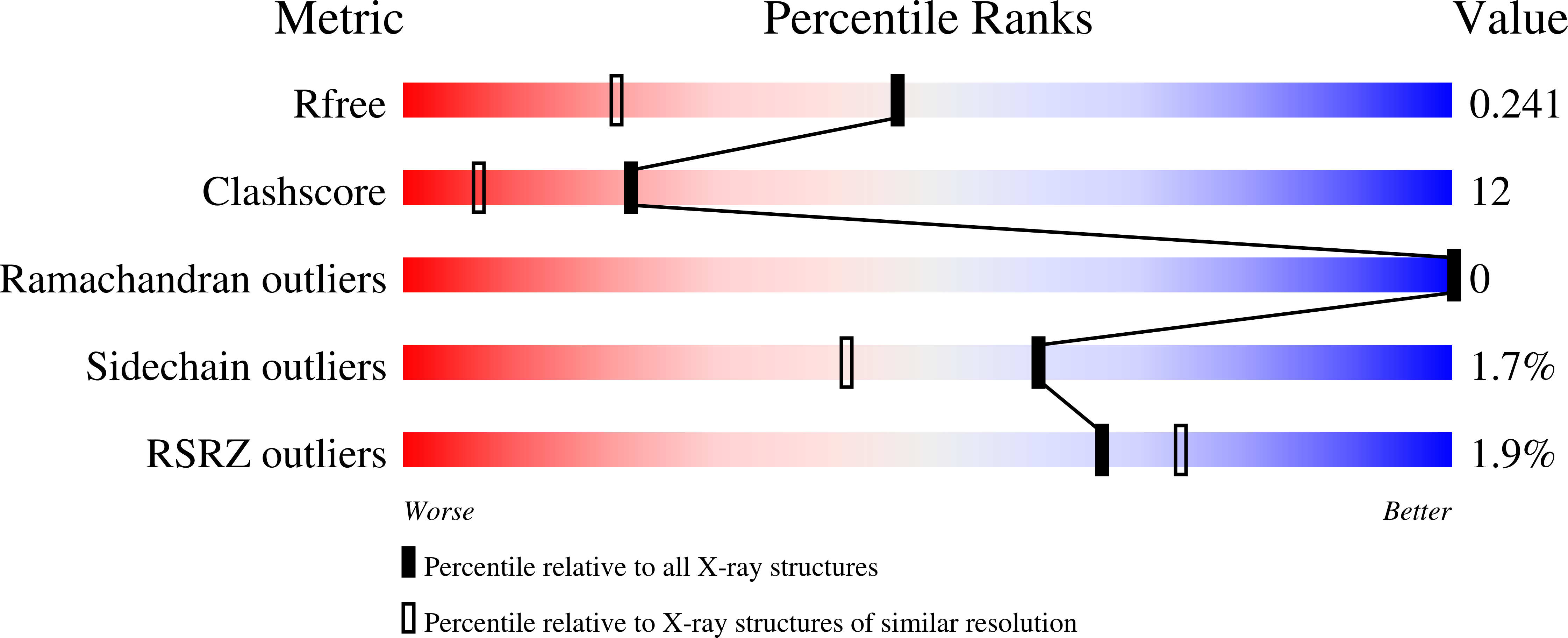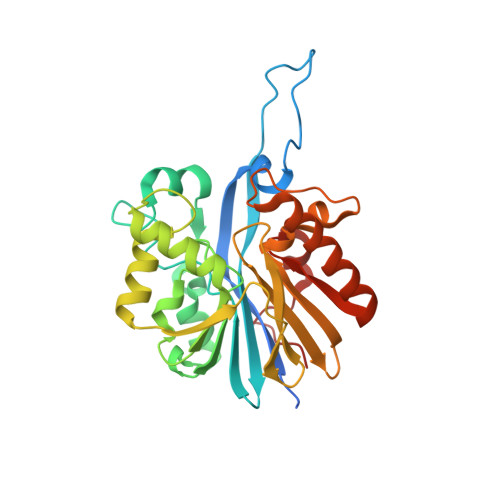The Structural Determinants Accounting for the Broad Substrate Specificity of the Quorum Quenching Lactonase GcL.
Bergonzi, C., Schwab, M., Naik, T., Elias, M.(2019) Chembiochem 20: 1848-1855
- PubMed: 30864300
- DOI: https://doi.org/10.1002/cbic.201900024
- Primary Citation of Related Structures:
6N9I, 6N9Q, 6N9R - PubMed Abstract:
Quorum quenching lactonases are enzymes capable of hydrolyzing lactones, including N-acyl homoserine lactones (AHLs). AHLs are molecules known as signals in bacterial communication dubbed quorum sensing. Bacterial signal disruption by lactonases was previously reported to inhibit behavior regulated by quorum sensing, such as the expression of virulence factors and the formation of biofilms. Herein, we report the enzymatic and structural characterization of a novel lactonase representative from the metallo-¦Â-lactamase superfamily, dubbed GcL. GcL is a broad spectrum and highly proficient lactonase, with k cat /K M values in the range of 10 4 to 10 6 ?m -1 ?s -1 . Analysis of free GcL structures and in complex with AHL substrates of different acyl chain length, namely, C4-AHL and 3-oxo-C12-AHL, allowed their respective binding modes to be elucidated. Structures reveal three subsites in the binding crevice: 1)?the small subsite where chemistry is performed on the lactone ring; 2)?a hydrophobic ring that accommodates the amide group of AHLs and small acyl chains; and 3)?the outer, hydrophilic subsite that extends to the protein surface. Unexpectedly, the absence of structural accommodation for long substrate acyl chains seems to relate to the broad substrate specificity of the enzyme.
Organizational Affiliation:
Biochemistry, Molecular Biology and Biophysics Department and, BioTechnology Institute, University of Minnesota, Saint Paul, MN, 55108, USA.
























